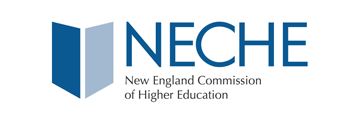SNHU Hosts 5th Annual Global Summit for Healthcare Professionals
Health | 5min Read

There are lots of advantages to taking a single course. Whether you want to grow in your current career, prepare yourself for a new one or get one step closer to a college degree, an individual course is a great way to get started.
Not only is a single course low-commitment, but it’s a fast way to gain skills and college credits while exploring what it’s like to take courses at SNHU.
SNHU courses focus on real-world, career-focused skills that you can use immediately in the workplace or to help prepare you to advance in the field.
Course credits may be transferred to a degree program at SNHU or another university, depending on your university’s transfer policy.
Whether you're upskilling or jumpstarting your degree, SNHU’s Coding and Classification Systems course can help you move forward. You'll explore essential technologies, terminologies and systems for organizing and maintaining patient data. Part of our CAHIIM-accredited BS in Health Information Management, this course aligns with industry standards to build career-ready skills.
81 students who took this course in 2024 were surveyed and rated it 9 out of 10 stars.

In many typical medical coding courses, students are taught the basics and guidelines, but are not taught how to interpret and analyze the data in a medical record. This course puts the two together, offering the foundational coding guidelines plus real-life cases and applications.
Donna Leone, Adjunct Healthcare Information Technology

Throughout the 8-week course, you'll learn a wide range of clinical coding and classification systems relating to patient information and characteristics, disease and symptom classification, products and supplies, procedural terminology and more. The program's key areas of study include coding classification systems, ICD-10, HCPCS II, CPT and evaluation management, and modifiers and terminologies.
Our no-commitment application can help you decide if SNHU is the right college for you and your career goals. Apply up until 2 days before the term starts!
Upcoming term starts: March 2, 2026 | May 4, 2026
With no set class times and 24/7 access to the online classroom, you can learn on your schedule. Learn more about what it's like to take a class at SNHU.
You’ll take your courses within SNHU’s Brightspace platform. This is where you’ll find your:

Expanding access to quality higher education means removing the barriers that may stand between you and your education. That’s why we make signing up for individual courses simple.
*If you are currently a high school student who hasn't graduated yet, you can still take individual courses at SNHU. Please reach out to an admission counselor for documents and forms that may be required.
If you choose to enroll in a degree program in the future, we’re here to help with additional forms, transcripts and other materials that may be necessary. For degree programs, acceptance decisions are made on a rolling basis throughout the year for our 6 (8-week) undergraduate terms.
At Southern New Hampshire University, you'll have access to a powerful network of more than 400,000 students, alumni and staff that can help support you long after graduation. Our instructors offer relevant, real-world expertise to help you understand and navigate the field. Plus, with our growing, nationwide alumni network, you'll have the potential to tap into a number of internship and career opportunities.
Recently, SNHU has been nationally recognized for leading the way toward more innovative, affordable and achievable education:
Founded in 1932, Southern New Hampshire University is a private, nonprofit institution with over 250,000 graduates across the country. SNHU is accredited by the regional accreditor New England Commission of Higher Education (NECHE), which advocates for institutional improvement and public assurance of quality.
Minimum Specifications:
Additional Information:

I'm amazed how everyone at SNHU has the same spirit. It's unreal how everyone is so nice and amazing and really is on board with helping us achieve the accomplishments we set out. It's unmatched.
Bridget Tomlinson, BS in Health Information Management
Online courses can help lighten the course load required by your degree program at SNHU or another university.
Credits you earn can transfer to SNHU degree programs, or to another university, depending on their transfer policy.
For moving up the ladder or changing fields entirely, new skills can help make you more marketable.
Talk to an admission counselor: 888.327.SNHU | enroll@snhu.edu
SNHU is accredited by the regional accreditor the New England Commission of Higher Education (NECHE). The university also carries specialized accreditations for some programs.

Tuition rates for SNHU's online courses are among the lowest in the nation.
Tuition rates are subject to change and are reviewed annually.
Please note: Books and materials are not included in the above costs. Federal Financial Aid is not available, but you can use employer tuition benefits or tuition reimbursement if available to you. Contact your employer benefits manager to see if you have funds available, or talk to our admission team to learn about payment options.
The best online medical billing and coding course is one that fits your needs. Time, cost and quality are all important to our learners as well as other factors such as the flexibility of our online format. That's why tens of thousands of students – and over 100K graduates – have chosen SNHU to further their futures.
With the wealth of information available and accessible online today, you can learn lots of things on your own. But without qualified, industry-experienced instructors to guide you, you may only be able to scratch the surface of a particular area of study, and may miss important (but hard to uncover) details. Especially in an area like healthcare, it's important to ensure you're getting the best education possible to ensure the safety and health of the patients you serve. Plus, any university courses you complete may be a great addition to your resume, demonstrating to employers that you have competency in this area.
Of course, different subjects may be more or less hard for different students. But at SNHU, we've learned that everything gets easier when you have an accessible online learning platform, an expert instructor, and all the tools and materials you need to succeed.
Taking an online medical coding course is a great start. You'll learn many industry standards and be taught by expert faculty with real-world experience. That way, you can gain many of the skills you need and be able to demonstrate to future employers that you've taken the time to learn and gain valuable experience. Plus, you'll earn college credits toward a full degree in Health Information Management, which could make you even more marketable in the field.
That all depends on how prepared you are. While there are many factors that go into how prepared you are for an exam, taking courses in the subject that you will be tested on, taught by industry experts, can help to prepare you and make you more comfortable for any exam you may need to take. At SNHU, our mission is to help you prepare for whatever comes next. Talk to an admission counselor for more information on what courses may be the best to help you prepare for your future.
There are lots factors that contribute to whether something is stressful – from the environment you're working in, to the work itself, to your own personal tolerance for stress. One way you may be able to feel more in control and less stressed about any topic is to have deep knowledge about it. That's why our Coding and Classification Systems course can be a great asset to any professional looking to work in the medical coding field. With key skills and knowledge in the subject area of medical coding, you'll be able to feel more prepared.
The job market can be competitive in the healthcare industry. And there are a lot of factors that can play into your ability to get a job in the field you want – like the amount of competition, your experience and skills in the field, your resume and how your interview goes. So, by taking a course (or earning a full degree in, for example, Health Information Management), you could help to set yourself apart from the competition and demonstrate to potential employers that you have the skills necessary to get the job done.
When it comes to medical coding, there can be a lot to learn depending on your level of experience. If you have absolutely no background in medical coding and billing, it typically takes longer than 3 months to become proficient and able to work in a professional setting. However, if you have some experience, you may be able to become proficient faster than typical. For example, you may already work in the healthcare industry, or your organization may be willing to give you on the job training to get you up to speed faster.
No matter where you're starting out or where your level of experience is, taking SNHU's 8-week online course in Coding and Classification Systems is a great start. You'll learn about some of the central technologies, terminologies and systems at the core of quality Health Information Management from an accredited institution with a long history of student success.
Medical billing and coding can definitely be worth it if you're looking for a flexible, in-demand career. It's all about helping manage patient data and billing processes, which are essential in healthcare. This field offers a variety of job options, including the possibility of working remotely or part-time once you've gained some experience. You can jumpstart your career with courses that teach you key skills, and if you want, you can keep growing your expertise as you go. With the job market expected to grow, there’s plenty of potential for career advancement, whether you're just starting out or looking to level up.
Learn more about why medical billing and coding can be worth it.
Yes, medical billing is in high demand. According to the U.S. Bureau of Labor Statistics, employment of medical records specialists is projected to grow 9% through 2033 – much faster than the average for all occupations.1 That increase translates to about 15,000 job openings each year!1
Medical billing doesn’t involve a lot of complex math. Most of the calculations are straightforward, including basic addition, subtraction, multiplication and division. Since billing systems and software handle much of the work, strong attention to detail is often more important than advanced math skills.
1Bureau of Labor Statistics, U.S. Department of Labor, Occupational Outlook Handbook, on the internet, at https://www.bls.gov/ooh/healthcare/medical-records-and-health-information-technicians.htm (viewed Feb. 12, 2024). Cited projections may not reflect local and/or short-term economic or job conditions and do not guarantee actual job growth.